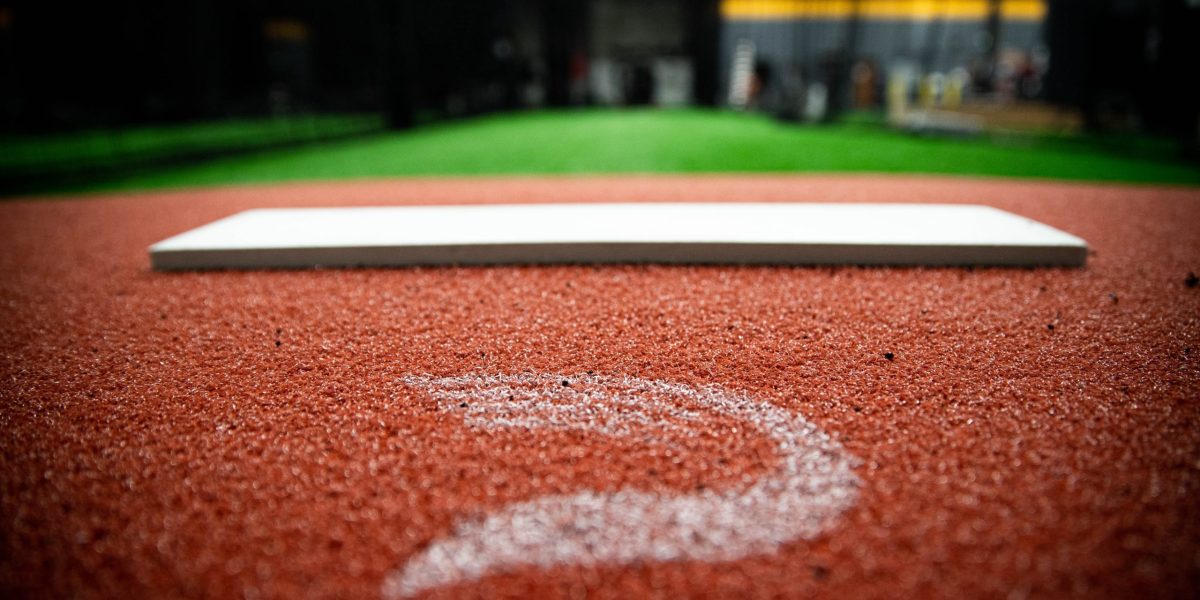Interpreting Force Plate Data for Athlete Programming

In the assessment summary blog, we used the analogy of filling buckets to explain how we apply force plate data in programming. Using our normative data to compare an athlete’s data to age/level of play specific averages while also taking into account the context of competition phase, training history, athlete goals, etc., we can accurately determine athlete needs.
Rather than speak generally, in this blog we will walk through the assessment process and program implementation for a specific athlete.
Strength Qualities
In the images below we can see Cole Uvila’s initial strength assessment data, ranging from his assessment in September 2020 to February 2021. The white line perpendicular to the bars is our pro average, with the dashed red lines marking a standard deviation above and below average. Looking at his strength and power metrics, we can see he was initially below average in all four metrics relative to our minor league normative data. This suggests Cole was fairly balanced heading into the offseason, with slightly larger deficiencies in absolute strength as shown in the IMTP, and reactive strength as seen in the hop test.




Phase of Competition
Next, we look at these needs in the context of the athlete’s phase of competition, as well as other factors specific to the athlete. Cole’s next competition will be in 2021 Spring Training, giving us roughly five training blocks (6 week each) together until he will be throwing in games.
When building out the athlete’s annual training plan, the time of year informs us on how to best structure their current phase for both long term development and preparation for competition. Generally, the closer an athlete is to competition the more their program will be geared towards preparation. The earlier it is in the offseason, the more we can focus on building new capacity.
Cole came to Driveline in August, giving us plenty of time to address his individual needs.
Training History
An athlete’s level of experience with weight training and throwing informs how much on-ramping they may need, as well as instruction in foundational movements.
As a 26-year-old professional athlete who has trained with us for multiple years, we know Cole has an extensive training history in both the weight room and with our throwing training methods. This tells us that any on-ramping he needs will be in terms of volume and intensity rather than in the general lifting skills, experience, etc. that a more inexperienced lifter may need.
Athlete Goals
Cole’s skill goals going into the 2021 season were to hit 100mph with his fastball and to make the 40-man roster for the Rangers.
Physically, his main goals were to build up his strength base and to improve his body composition, as he had always felt weak relative to teammates and competitors.
The Plan
Early in the offseason, Cole’s lifting program focused on relatively high volume strength work, working in mostly rep ranges of 5 to 10 reps per set and increasing his time under tension. This accumulation block was designed to help him build some muscle mass and make strength gains; this corresponded with a lower high intensity throwing volume so as to balance his overall training economy.
As you can see in the graphics below, through the offseason he saw a very small change in body weight and a very large change in relative strength (IMTP Net PF divided by BW). Along with visually observable changes in his body composition, an increase of this magnitude in relative strength without a significant change in body weight often indicates an improved body composition, as the athlete is exerting significantly more force with relatively similar body mass.


Cole’s focus has shifted over the offseason, with reduced weight room volume and increasing high intensity throwing volume, and now that he is approaching competition his weight room focus will largely shift to power development and xpxlyometricxx work so as to develop and prepare the systems he’ll need in games this season.
Results and Continuing
As shown in the previous graph of his IMTP Net Peak Force, Cole’s IMTP NPF has increased steadily over the last three training blocks, with an average gain of about 500N per block. This magnitude is atypical for the average trainee, but the trend of development and the layout of his offseason plan is relatively common for our pro arms.
Overall, our procedure is the same as before we had force plates. We begin by determining athlete needs and goals, and then plan and execute a plan to address and achieve those while regularly monitoring progress. The biggest advantage the force plates provide in programming is the specificity and accuracy of the information we have when determining needs and measuring progress.
Comment section